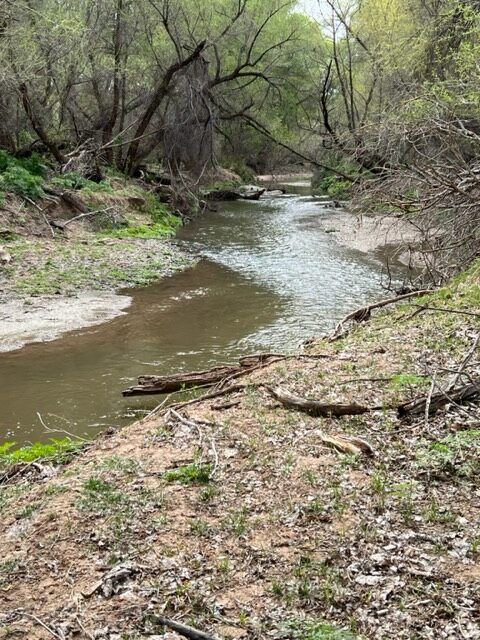
STOPPING BY THE WOODS ON A SUNNY AFTERNOON
I am indebted to Tina Welling and “Writing Wild: Forming a Creative Partnership With Nature” for inspiring this piece, celebrating the official arrival of Spring, 2023.
One of my favorite walks is along the Anza Trail, not far from our house in southern Arizona.This historical trail has its origins in Alamos, Mexico on October 23, 1775 and ends in San Francisco on March 28, 1776, with an expedition led by Juan de Bautista de Anza. He stopped here where I live at The Tubac Presidio which was established in 1752 to protect the Spanish colonists from the Apache (Ndee and Chiricahua) and Seri (Comca’ac), to intimidate and control the O’odham people, and to further expand Spanish colonial power in what is now the Southwest United States.
Juan Bautista de Anza was the second commander of the presidio, and led the expedition to California that resulted in the founding of the city of San Francisco in 1776. The expedition included 240 colonists originally from Sinaloa and Sonora, 63 of whom were living in Tubac. The colonists gathered over 1,000 head of livestock-cattle, horses, and mules at Tubac for the expedition, which departed from the presidio on October 23, 1775.
I depart my house around 1 PM on a sunny, breezy, Sunday afternoon, March 19, 2023, pick up the trail about ¼ mile east and walk toward the woods a little farther on. I decide to leave the well-worn path and venture a little deeper into the forest, mostly cottonwood and mesquite trees. On sandy soil close to the river, covered with dead leaves and branches, a cow path meanders toward the Santa Cruz River. I keep going south and see the river to my left, find a fallen tree on the riverbank about 12’ from the water, and sit comfortably, looking south, down river although it flows north. It’s the only river in the U.S. that crosses the border with Mexico twice and the story of the river’s history and importance is another story for another time. Suffice to say here, it is a significant riparian zone for many reasons. After 200 miles, the Rio Santa Cruz joins the Gila River which is a tributary of the Colorado River.
Few people realize that the Gila is one of the longest rivers in the West. That’s because it’s typically drained dry before getting halfway through its 500-mile voyage west to the Colorado River near Yuma, AZ. Once navigable by large riverboats from its mouth to Phoenix, the Gila below Phoenix today crosses the Gila River Indian Reservation as an intermittent trickle due to large irrigation diversions. I note my continuing concern about water conservation and am glad to know of the good work of the Sonoran Institute and their partnership with Pima County to help restore and sustain the health of the Santa Cruz River.
I am fortunate to live near the woods and this river and enjoy being immersed in this environment with regular walks and hikes and pauses like this to reflect on the beauty, the peaceful surroundings, the quiet, except for the slight river current and a light breeze. Being here in this moment speaks to me of our connections to and relationships with our natural world and how we need to help value and protect them whenever and however possible.
That we are creatures on this planet given such an environment is a blessing and a treasure. As I sit and look at all the new, green growth of Spring, above and below on this warm afternoon, I am reminded of the cycles and the seasons of life, death and regeneration. As I celebrate the vernal equinox, I consider what it means to be connected to what appears to be the movement of the sun along the horizon from south to north and at this midpoint in the hours of daylight and night time. I say “appears” as we know it has more to do with the tilt of the earth along its axis and rotation. Earth’s axis is currently tilted 23.4 degrees, or about half way between its extremes, and this angle is very slowly decreasing in a cycle that spans about 41,000 years. Summer solstice is just 3 months ahead.
I hear birds – cardinals, crows, flickers, phoebes and others – but do not see them in this thick forest. I absorb more of my surroundings, another slight breeze from the south in my face, see a few flying insects and a butterfly and clouds moving in to cover a blue sky above the tree tops. I tell myself it is time to say thank you and move on back to the more familiar path and home again. A tuft of cottonwood seed lands on my page and is quietly blown away. More seeds, floating down on their little white parachutes land on the sandy soil. Given time and the right conditions, a few are destined to become giant trees along this riverbank someday. We and the forest, sharing common ground.
